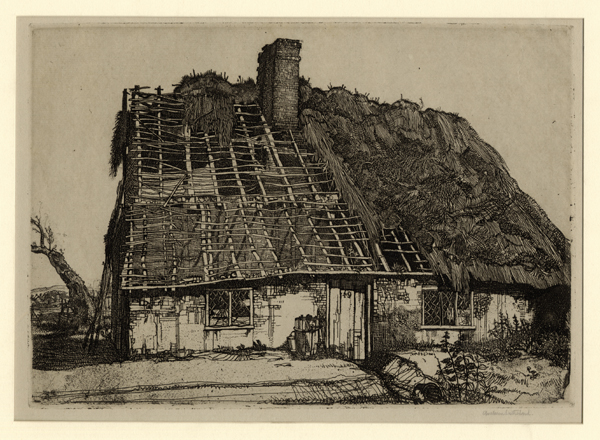40 YEARS 40
our fortieth-anniversary show
our fortieth-anniversary show
- French School, Adoration of the Shepherds
- Mantegna, Bacchanal with a Wine Vat
- Robetta, Adoration of the Magi
- Dürer, The Virgin with the Infant Child
- van Leyden, St. Francis of Assisi
- Altdorfer, Dido
- after Raphael, Raphael and His Mistress
- Pencz, The Taking of Carthage
- Brosamer, Nude Woman in Profile
- Barocci, Madonna and Child in the Clouds
- Zucchi, Design for an Ornate Ceiling
- Goudt, Tobias with the Angel
- Della Bella, Le Reposoir du Saint Sacrement
- Rembrandt, Woman Sitting Half-Dressed Beside a Stove
- Challe, Fantasy Capriccio of a Roman Palace
- Piranesi, St. Peter’s
- Bonet, The Lady ta King Coffee; The Milk Woman
- Goya, Felipe IV, Rey de España
- Meryon, Saint-Etienne-du-Mont, Paris
- Whistler, Thames Police
- Manet, Queue Devant la Boucherie (Siège de Paris)
- Doré, Children’s Ward in a London Hospital
- Buhot, La Maison Maudite
- Guérard, Eventail: Oiseaux dans les Roseaux
- Rivière, La Village de La Chapelle
- Auriol, Bois Frissonnants
- Lepère, Les Laveuses (Les Blanchisseuses)
- Toulouse-Lautrec , La Troupe de Mademoiselle Eglantine
- Cezanne, Self Portrait at the Easel
- Sloan, Turning Out the Light
- Goodwin, Durham with the Cathedral
- Villon, Musiciens Chez le Bistro
- Kollwitz, Selbstbildnis
- McBey, Farm Scene at Hatford
- Beckmann, Umarmung (Embrace)
- Drewes, The City (Carcassonne)
- Sutherland, Number Forty-Nine
- de Chirico, Scuola di Gladiatori II
- Friedlander, 3 A.M.
- Marsh, Coney Island Beach
Number Forty-Nine
Etching, 1924, Tassi 14, Man 22 iii/iii (presumably; Man gives no description of states), 176 x 249 mm. Superb impression on grey laid paper with the watermark Charles I and a Shield, with full margins, signed in pencil and inscribed with the title, in flawless condition. The total edition of all states was eighty impressions. Sutherland, who later developed into a very different artist indeed, began in the British Pastoral tradition established originally by Blake, Palmer and Calvert. Together with several other, then virtually unknown artists, he established a kind of neo-Romantic art that, though employing etching as a medium, somehow stood apart from the then-flourishing etching revival movement. It is fascinating to follow the development of his work as a print maker: by 1929, it shows a conscious distortion of forms; by 1932, he has clearly joined “Modern Art.” Whatever one may think of his later work, the early etchings form a precious and individual legacy in themselves.
![]()
